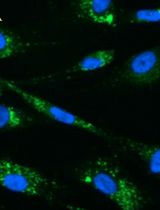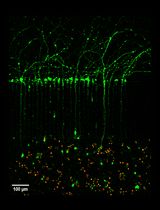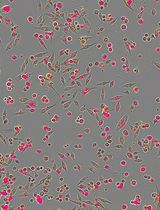- EN - English
- CN - 中文
Evaluation of Toxicity with Brine Shrimp Assay
通过卤虫实验进行毒性评价
发布: 2021年01月20日第11卷第2期 DOI: 10.21769/BioProtoc.3895 浏览次数: 7999
评审: Alexandros AlexandratosPooja VermaAnonymous reviewer(s)

相关实验方案

利用Cyto-ID®染色和Cytation成像技术定量分析人类成纤维细胞中的自噬小体
Barbara Hochecker [...] Jörg Bergemann
2024年07月05日 1506 阅读
Abstract
The in vivo toxicity of new metallodrugs either as Small Bioactive Molecules (SBAMs) or Conjugates of Metals with Drugs (CoMeDs) or their hydrogels such as with hydroxyethyl-methacrylate (HEMA) (pHEMA@SBAMs or pHEMA@CoMeDs) are evaluated by the brine shrimp assay. Thus individuals of Artemia salina larvae are incubated in saline solutions with SBAMs, CoMeDs, pHEMA@SBAMs or pHEMA@CoMeDs or without for 24 h. The toxicity is then determined in terms of the mortality rate of brine shrimp larvae. Brine shrimp assay is a low cost, safe, no required feeding during the assay, while it requiring only a small amount of the tested agent.
Keywords: Bioinorganic Chemistry (生物无机化学)Background
The approval of cisplatin in the clinical treatment of cancer boosted the development of the field of bioinorganic chemistry or medicinal inorganic chemistry. The discovery of new active metallodrugs requires the elucidation of their mode of action. Thus, for example, the targeted delivery of antiproliferative metallodrugs to malignant cells, the activation of inorganic prodrugs and the advent of nanoscience have prompted the scientists to spotlight the toxicity of them (Metzler-Nolte and Guo, 2016). Especially, the research on the design and development of new metallodrugs (either as Small Bioactive Molecules (SBAMs) or Conjugates of Metals with Drugs (CoMeDs)), includes their in vitro testing against numerous cancerous cell types and their in vivo toxicity evaluation towards model organisms (Sainis et al., 2016, Stathopoulou et al., 2018; Banti et al., 2016, 2018, 2019 and 2020; Chrysouli et al., 2018a, 2018b and 2020; Latsis et al., 2018, Milionis et al., 2018; Karetsi et al., 2019; Polychronis et al., 2019; Ketikidis et al., 2020; Rossos et al., 2020). For example: When Artemia salina larvae were incubated with the copper(II) complex of amantadine (AdNH2), with formula {[AdNH3+]•[CuCl3]-} (CA) (Banti et al., 2020) or the corresponding one of the silver(I) with penicillin G (PenH) [Ag(pen)(CH3OH)]2 (PenAg) (Ketikidis et al., 2020) for 24 h, the percentages of survival of brine shrimp larvae at 30, 60, 90, 120 and 150 μΜ; of CA were (78.3±10.2), (85.4±6.5), (87.9±9.6), (82.6 ±10.8) and (76.9±11.9) %, respectively. The survival rate of brine shrimp larvae at the concentrations of 150 μΜ, is similar with the corresponding one of the non-treated larvae, suggesting its non toxic behavior. In case of PenAg, the percentage of survival of brine shrimp larvae at 37, 74.5, 150, 220 and 1050 μΜ are (94.7±2.5), (87.3±5.0) (82.6±4.7), (63.4±6.1) and (11.0±5.0) %, respectively, indicating toxicity at the concentration of 1050 μΜ. Moreover, in the case of the hydrogel which derives by the dispersion of the cluster {[Ag6(μ3-HMNA)4(μ3-MNA)2]2−•[(Et3NH)+]2•(DMSO)2•(H2O)} (AGMNA), (H2MNA= 2-thio-nicotinic acid), in polyhydroxyethyl-methacrylate (pHEMA) (pHEMA@AGMNA-1) (Rossos et al., 2020), no mortality rate of brine shrimp larvae was found, upon their incubation with pHEMA@AGMNA-1 for 2, 4, 6, 8 and 24 h, suggesting the non-toxic behavior of the material.
Artemia salina is a zooplanktonic crustacean found in a variety of seawater systems (lakes, oceans) and it is one of the most popular live foods for many fishes and aquatic invertebrates (Zhu et al., 2018). A. salina interacts with the aquatic environment and faces high risk exposure to contaminants (Zhu et al., 2018). The nauplii of the brine shrimp are considered as a simple and suitable model system for acute toxicity tests (Trompeta et al., 2019). The nauplii feature a higher sensitivity to toxic agents compared to the adult Artemia (Trompeta et al., 2019).
A. salina is a popular model organism for toxicological tests, due to its short life-cycle, ease of culture, high offspring production, the commercial availability of its cysts, year-round availability, low cost, safety, no required feeding during the assay, requiring only a small amount of the tested agent (Ates et al., 2013; da Silveira Carvalho et al., 2017; Zhu et al., 2018). Moreover, many endpoints can be selected for toxicological evaluation, including hatching, mortality, swimming, morphology and biomarkers (Živković et al., 2016; Zhu et al., 2018).
The assay correlated with the toxicity data of rodents and humans and shows a good correlation with cytotoxicity tests making these measurements suitable as preliminary results (Živković et al., 2016; da Silveira Carvalho et al., 2017). Artemia species have been used in testing acute toxicity of toxic materials, such as heavy metals and pesticides (Ates et al., 2013), nanoparticles (Zhu et al., 2018), bioactive molecules, natural extracts and metal complexes (da Silveira Carvalho et al., 2017).
Materials and Reagents
Brine shrimp assay
Latex gloves (KCWW, Kimberly-Clark, catalog number: 57330 )
24-well plate, sterile and tissue-treated (Corning, catalog number: 3526 )
Pipette tips
Brine shrimp eggs (Artemia salina) (were purchase from Ocean Nutrition) and the Pure Artemia Cysts are coming from the Great Salt Lake and therefore geographical variations are not affecting the assay
Sodium chloride (NaCl) (Sigma-Aldrich, catalog number: S7653 )
Sea salt (Tropic Marin)
Equipment
2 L separating funnel with 24/29 joint
Stereo microscope Stemi 2000 (ZEISS)
Air Pump (Mouse M-106, two outputs 4w)
Soft light source such as fluorescent lamps 7w
Incubator
Note: Any incubator is fine if it maintains 25 °C to 37 °C, 50-60% humidity and 12 h day lighting/ 12 h dark for 24 h.
Software
Microsoft Office Excel
Procedure
文章信息
版权信息
© 2021 The Authors; exclusive licensee Bio-protocol LLC.
如何引用
Banti, C. N. and Hadjikakou, S. K. (2021). Evaluation of Toxicity with Brine Shrimp Assay. Bio-protocol 11(2): e3895. DOI: 10.21769/BioProtoc.3895.
分类
癌症生物学 > 癌症生物化学 > 基因毒性
微生物学 > 抗微生物试验 > 杀伤试验
细胞生物学 > 细胞活力 > 细胞死亡
您对这篇实验方法有问题吗?
在此处发布您的问题,我们将邀请本文作者来回答。同时,我们会将您的问题发布到Bio-protocol Exchange,以便寻求社区成员的帮助。
提问指南
+ 问题描述
写下详细的问题描述,包括所有有助于他人回答您问题的信息(例如实验过程、条件和相关图像等)。
Share
Bluesky
X
Copy link












